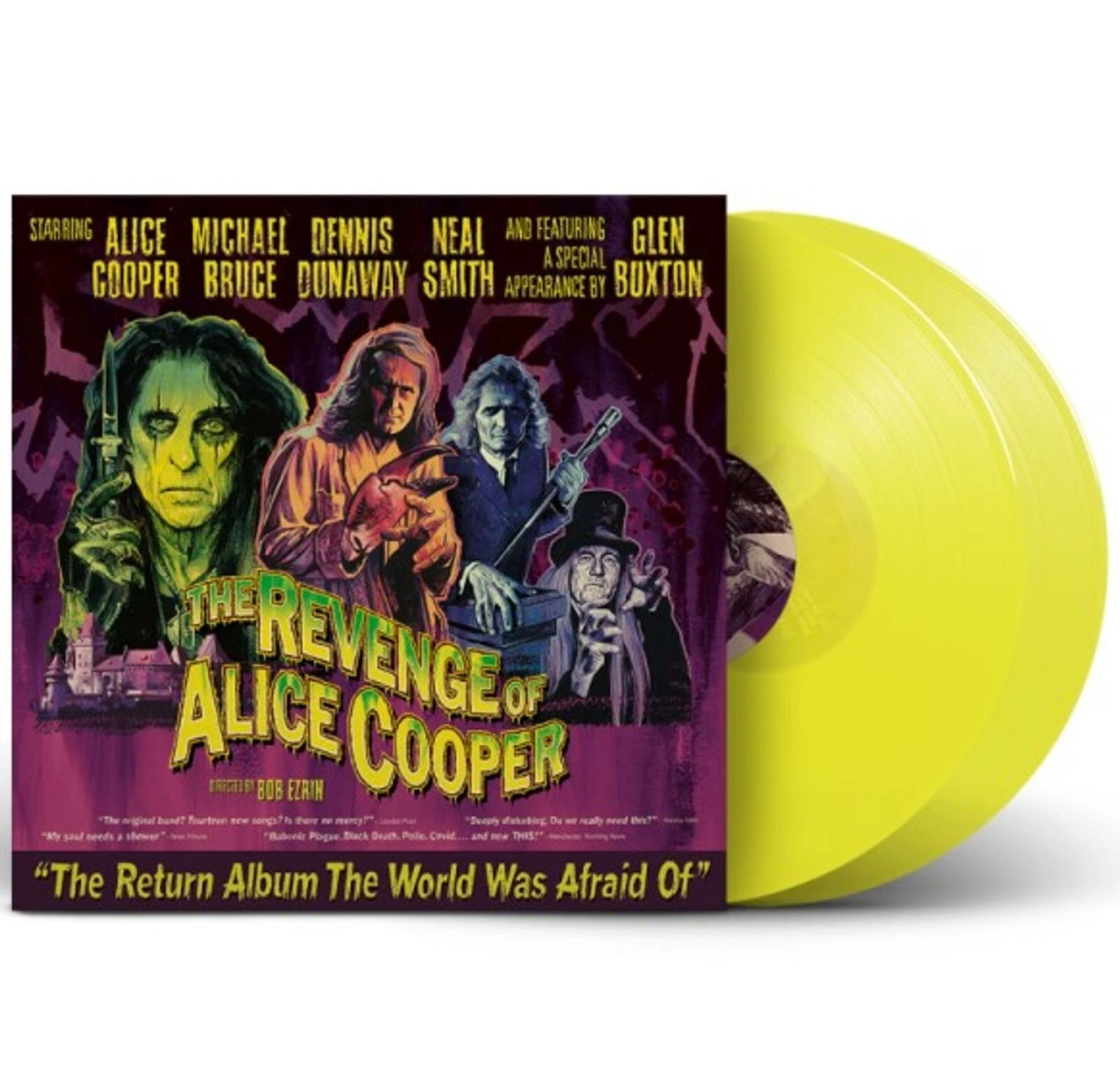The reunion of the original Alice Cooper band – Alice himself, Michael Bruce, Dennis Dunaway, and Neal Smith – for The Revenge of Alice Cooper, their first full album together since 1973’s Muscle of Love, is an event dripping with rock history and sentimental weight. Helmed by the legendary producer Bob Ezrin, the architect behind their classic 70s triumphs and Alice’s groundbreaking solo debut Welcome to My Nightmare (1975), expectations soared for a potent blend of past glory and evolved artistry. Tragically, the result feels less like a triumphant resurrection and more like a meticulously preserved fossil – a technically competent but ultimately hollow exercise in nostalgia that squanders its most potent weapon: Ezrin’s genius for theatrical transformation. This isn’t revenge; it’s reanimation .
The Weight of Legacy and the Echoes of Buxton: There’s undeniable poignancy in the reunion. Glen Buxton’s spectral presence, woven into “What Happened to You” via unearthed tapes and symbolized by his amp and whiskey glass in the studio, casts a long, melancholic shadow . Tracks like the opening “Black Mamba” (featuring Robby Krieger) effectively conjure the sinister, spoken-word atmospherics of early Cooper, while “Wild Ones” and “Up All Night” deliver the kind of straightforward, riff-driven rock that was the band’s initial stock-in-trade . Neal Smith’s “Kill The Flies,” positioned as a sequel to “Ballad of Dwight Fry,” offers a flicker of conceptual intrigue , and moments like the harmonica-driven “Inter Galactic Vagabond Blues” or the jazz-tinged “What A Syd” (a clear callback to Lace and Whiskey‘s “Blue Turk”) provide welcome, if brief, detours . The band plays with commendable energy, a testament to their enduring chemistry .
The Ezrin Conundrum: Curator Instead of Catalyst: Herein lies the core disappointment. Bob Ezrin, the man who took the raw garage band of Pretties For You and sculpted them into chart-topping, concept-album pioneers on Killer, School’s Out, and Billion Dollar Babies, is present. Yet, his role here feels fundamentally different. Instead of the visionary auteur who pushed boundaries, he seems content as a faithful curator and skilled engineer. The production, while crisp and capturing a “live in the studio” feel praised by some , lacks the daring sonic landscapes, intricate arrangements, and dramatic flair that defined his most iconic work with Cooper. Compare the raw, almost demo-like feel of much of Revenge to the rich, varied, and meticulously constructed tapestry of Welcome to My Nightmare – an album bursting with orchestral swells (“Steven”), disco-funk (“Department of Youth”), haunting ballads (“Only Women Bleed”), and Vincent Price’s iconic cameo, all woven into a cohesive, terrifying narrative . Ezrin on Nightmare was a fearless collaborator and shaper; on Revenge, he feels like a respectful documentarian.
Nostalgia as a Straitjacket: The album’s fatal flaw is its overwhelming reliance on pastiche. Tracks consciously evoke specific eras: “Money Screams” channels the Ramones, “I Ain’t Done Wrong” is a Yardbirds homage, “Crap That Gets In The Way Of Your Dreams” aims for garage-punk origins . While executed with gusto, these songs feel like exercises in replication rather than inspired reinvention. The thematic content, leaning heavily on horror tropes (“Black Mamba,” “One Night Stand”) and rock clichés (“Famous Face,” “Wild Ones”), lacks the sharp wit, social commentary, or deeply personal neuroses that fueled Cooper’s best lyrics, whether with the band or on solo masterworks like Nightmare or From the Inside. The closing ballad, “See You On The Other Side,” while heartfelt in its farewell to departed friends (including Buxton and the Hollywood Vampires), ultimately lacks the devastating emotional punch of Nightmare‘s “Steven” or “Only Women Bleed” .
The Missed Nightmare Opportunity: The user’s lament cuts deep because Welcome to My Nightmare represents the zenith of the Cooper/Ezrin partnership’s ambition. It was a radical departure – a fully realized, theatrical solo concept album exploring childhood fears and psychological disintegration with musical daring and production brilliance. The Revenge of Alice Cooper had the exact ingredients – the original band’s chemistry, the legendary producer, decades of accumulated experience – to attempt something similarly bold. Instead of using the reunion as a springboard for a new nightmare, reflecting Cooper’s enduring persona through a modern, evolved lens, they chose to meticulously recreate an old one. They had Ezrin on board, not to push them into thrilling new territories, but seemingly to ensure the recreation was as accurate as possible .
Verdict: The Revenge of Alice Cooper is not a bad album. It’s a dutiful one. It will undoubtedly please die-hard fans craving the specific sonic signature of the original band, played with energy five decades on. The historical significance of the reunion is undeniable, and the respect paid to Glen Buxton is touching. However, judged as a piece of art in 2025, helmed by one of rock’s most inventive producers, it feels like a profound missed opportunity. It leans so heavily on replicating the past that it forgets to forge a future. Bob Ezrin’s presence only heightens the sense of what could have been – a step not towards a new, unsettling nightmare, but a comfortable, albeit well-constructed, trip down memory lane. The revenge, it seems, is time’s; it proves that even legends and their brilliant producer can sometimes find themselves trapped by the very history they created .

